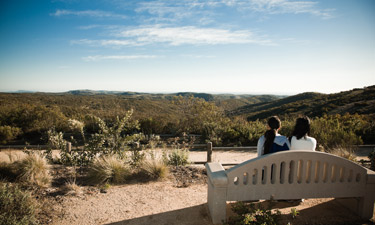
When Anaheim set out to create its first park in the 1920s, the city was determined to build a community gem that embraced the values of its founders. Known at that time for its citrus industry, Anaheim was first established in 1857 as a wine colony by an educated group of 50 German immigrants from San Francisco—many of whom were artists and musicians. Though just one had experience with viticulture and wine production, by 1864 Anaheim had become one of the country’s principal wine regions. A blight destroyed the city’s grape industry in the 1880s, forcing the advent of walnut, chili, and ultimately Valencia orange farming—but the cultural influences of the city’s forefathers remained.
“They wanted a community that thrived on agriculture…and to have a very strong emphasis on the arts,” says eight-year Community Services Director Terry Lowe. “They were seeking what they defined as an ‘agricultural utopia.’”
Constructed on 20 acres of an old vineyard, City Park (renamed Pearson Park in 1960 after former Mayor Charles Pearson) would become what Lowe calls the “jewel” of the park system. The promenade-style park plans included an Olympic-sized pool, tennis courts, lagoons, and the crowning achievement— a 2,000-seat outdoor amphitheater, which is now the oldest arts facility in Orange County.
According to planning commissioner and local historian Stephen Faessel, Anaheim would later be known as “the city with the beautiful park.” He attributes this reputation largely to a man named Rudy Boysen, who Faessel says “single-handedly did more to beautify [City Park] than anybody before him and anybody after him.”
A farmer and self-schooled botanist who first propagated the berries made famous by Knott’s Berry Farm (Walter Knott named them boysenberries after their creator), Boysen is credited for planting the diverse range of trees, California native plants, and rare cacti that still grow in the park today.
After becoming park superintendent in 1927, Boysen—who would later have a park named after him—constructed La Palma Park, home to the city’s municipal football and baseball stadiums, and a large special event facility. A devastating flood destroyed the park before its opening in 1938, but the city persevered, and the park was rebuilt.
In the 1950s and 1960s, agricultural costs increased and the citrus industry declined. Disneyland made its debut and new industries emerged, both of which increased demand for residential development. According to Lowe, the city’s leaders began a concerted effort to acquire unincorporated land, culminating in the 47 parks spanning 600 acres in Anaheim today.
He emphasizes what he feels was a particularly important strategy for the system’s development. “Our city fathers were smart enough to lay out many of the parks next to schools,” he states. “It doubles our open space, as the community has full use of the athletic areas of the schools during non-peak hours.” The city leadership always had a long view…not of ‘Anaheim today,’ but Anaheim in the future,” adds Faessel.
In July 2011, the city dedicated Founders’ Park, a two-acre destination located on part of an old vineyard lot in the original Anaheim Colony. Among the many features on the property are two historic homes: the Mother Colony House, the oldest remaining wood-framed building in Orange County, and the Queen-Anne-style Woelke-Stoffel House. A newly built carriage house displays exhibits.
Lowe acknowledges the way the first city parks define Anaheim’s past as a small town, but he is quick to credit another part of history with shaping his department’s outlook today. “Our collaborations go back well into the seventies,” says Lowe. “We are an old city with deep relationships. We have the ability to pull many groups together to address community issues.”
He mentions Activate Anaheim, a coalition created in 2009. In partnership with more than 30 organizations, the city is seeking, through organized efforts and a common language, to reverse child obesity and chronic disease. To date, the coalition has raised more than $1 million in funds from entities such as the Centers for Disease Control and Prevention and Kaiser Permanente for fitness initiatives and outreach projects. In March 2012, the coalition announced the establishment of a HEAL Zone in a targeted neighborhood in central Anaheim, with the goals of increasing healthy food and beverage consumption, and physical activity.
With an additional focus on multigenerational social change, Lowe emphasizes Project SAY (Support Anaheim’s Youth), a program started in 1991 by his department in partnership with local schools. Students in crisis or those that school administrators identify as having significant barriers to graduating from high school are encouraged to participate. They are provided, according to the city’s website, “a combination of outreach, recreation, educational workshops, and individual guidance to engage youth in positive and constructive activities, and to promote [their] healthy development…”
“We want them to join our gang instead of one in the neighborhood,” Lowe states, adding that many of them become ambassadors for other at-risk youth, and 95 percent go on to some form of further education after graduating from high school.
Like many before him, Lowe has his eye on the future. To spur community engagement in underutilized areas near the Santa Ana River, the city partnered with the Orange County Water District to create Anaheim Coves, a 14-acre nature park. Once a blighted, fenced-off area used solely as a percolation base, the space now includes a 1.5-mile multi-use trail, restrooms, parking, interpretative signage, irrigation, native landscaping, and observation areas.
Lowe hopes that Anaheim will eventually engage the river from one end of the city to the other. While he is not sure about the form this will take, he notes inspiration from different cities in the U.S.
“We are trying to learn from others, blaze some new ground, and maybe people can learn from us,” says Lowe.
Amy Kapp is a freelance writer in Fairfax, Virginia.

